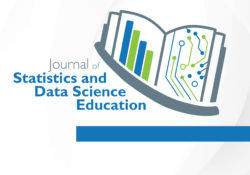tandfonline.com har udgivet en rapport under søgningen “Teacher Education Mathematics”: Abstract Abstract The novel coronavirus has forced the world to interact with data visualizations in order to make decisions at the individual level that have, sometimes, grave consequences. As a result, the lack of statistical literacy among the general public, as well as organizations that have a responsibility to share accurate, clear, and timely information with the general public, has resulted in widespread (mis)representations and (mis)interpretations. In this article, we showcase examples of how data related to the COVID-19 pandemic has been (mis)represented in the media and by governmental agencies and discuss plausible reasons why it has been (mis)represented. We then build on these examples to draw connections to how they could be used to enhance statistics teaching and learning,… Continue Reading →
Like this:
Like Loading...
tandfonline.com har udgivet en rapport under søgningen “Teacher Education Mathematics”: ABSTRACT ABSTRACT This article offers a description of how empirical experiences through the use of procedural knowledge can serve as the stage for the development of hypothetical concepts using the learning cycle, an inquiry teaching and learning method with a long history in science education. The learning cycle brings a unique epistemology by way of using procedural knowledge (“knowing how”) to enhance construction of declarative knowledge (“knowing that”). The goal of the learning experience was to use the learning cycle to explore “high tech” and “low tech” approaches to concept development within the context of statistics. After experiencing both, students recognized the value of high and low tech approaches to instruction. Given that statistical literacy is essential for engaging in… Continue Reading →
Like this:
Like Loading...
tandfonline.com har udgivet en rapport under søgningen “Teacher Education Mathematics”: ABSTRACT ABSTRACT Language of risk and causation pervades modern media sources. In response, statistical literacy is often framed as a critical means of understanding such discourse. At Michigan State University, several faculties have worked to create a new mathematics course, entitled Quantitative Literacy, to fulfill the University’s general education mathematics requirement. Though the course does not center exclusively on statistical thinking and methods, the curriculum does include attention to science reports in the media, among other topics, which are often based on research using statistical methods. In an effort to begin to understand how students reason with such articles before having taken the course, students in Quantitative Literacy answered several open-ended questions at the beginning of the semester in response… Continue Reading →
Like this:
Like Loading...
tandfonline.com har udgivet en rapport under søgningen “Teacher Education Mathematics”: Abstract Formulae display:?Mathematical formulae have been encoded as MathML and are displayed in this HTML version using MathJax in order to improve their display. Uncheck the box to turn MathJax off. This feature requires Javascript. Click on a formula to zoom. Abstract In the first years of their economics degree programs, students will face many problems successfully dealing with a range of subjects with quantitative content. Specifically, in the field of statistics, difficulties to reach some basic academic achievements have been observed. Hence, a continuing challenge for statistics teachers is how to make this subject more appealing for students through the design and implementation of new teaching methodologies. The latter tend to follow two main approaches. On the one hand,… Continue Reading →
Like this:
Like Loading...



